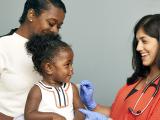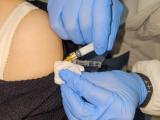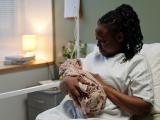Sep 21, 2010 (CIDRAP News) – State and local health departments have significantly improved their readiness for public health emergencies in the past few years, with laboratory capacity and emergency operations centers leading the list of improved areas, the Centers for Disease Control and Prevention (CDC) said in a major report released today.
"We have some really good news, and there's some nice trend data," particularly in lab capacity and response readiness capacity, Dr. Ali Khan, director of the CDC Office of Pubic Health Preparedness and Emergency Response, told CIDRAP News.
"We know we're doing a lot better at communicating emergency health information," he said. "We're doing a lot better at activating state and local emergency operations centers, putting people together in a short period of time. We also have tremendous improvement in showing that local and state health departments are able to obtain materials from the Strategic National Stockpile."
The 192-page report, titled "Public Health Preparedness: Strengthening the Nation's Emergency Response State by State," is the CDC's third major preparedness assessment in recent years and the second to give state-by-state information. The previous report came out in February 2008.
The new report mainly covers fiscal year 2008 (October 2007 through September 2008), with some newer information. "This data is mostly 2008 and a little bit from 2009, so it doesn't fully factor in the additional fiscal difficulties that many have had over the past 2 years," said Khan.
The report examines preparedness activities of the 50 states; the four "localities" of Chicago, the District of Columbia, Los Angeles County, and New York City; and US "insular areas," including territories and freely associated states.
In releasing the report at an Association of State and Territorial Health Officials (ASTHO) preparedness conference in Rhode Island today, the CDC cited the following as highlights:
- Almost 90% of states and localities showed the ability to activate and quickly staff their emergency operations centers for drills, exercises, and real events, and 96% wrote after-action reports and improvement plans.
- Biological lab capabilities were strong in most states and localities. Nearly 90% of labs in the Laboratory Response Network (LRN) could be reached around the clock, and 94% of labs passed tests for detecting biological agents.
- All states and localities could receive and investigate urgent disease reports 24 hours, 7 days a week, and more than 90% of labs used rapid methods to communicate with other laboratories.
- Seventy-two percent of LRN chemical labs showed proficiency in core methods for detecting and measuring exposure to chemical agents.
But the agency also said big challenges remain, particularly in providing funding to nourish a strong public health work force, strengthening state epidemiology capacity, improving continuity-of-operations plans for state laboratories, and measuring preparedness, especially in surveillance and epidemiology.
The report says Congress has appropriated about $1.5 billion a year for the CDC Office of Public Health Preparedness and Response since 2002; about 75% of this goes to the states and the national stockpile, with the rest supporting activities within the CDC.
Khan said the annual funding for state preparedness programs peaked at $970 million in 2003 and has since decreased by 29%, to $689 million. "I'm very cognizant of the fact that $689 million is a significant amount to help our partners, but it's spread across all 50 states and numerous cities," he commented.
He said the nationwide response to the 2009 H1N1 flu pandemic was much better than it would have been without the sustained preparedness allocations of the past decade.
Here is a further sampling of the improvements detailed in the report:
- State labs have improved their ability to rapidly identify bacteria. The number of labs submitting at least 90% of test results to PulseNet within 4 working days increased between 2007 and 2008 by 26% for E coli O157:H7 and by 70% for Listeria monocytogenes.
- All states used rapid electronic communications to monitor and communicate emerging information, and labs in 47 states were able to do so with other facilities such as sentinel labs and other partners.
- The number of jurisdictions responding to a CDC Health Alert Network test message within 30 minutes increased by 23% from 2007 to 2009.
- All states performed at acceptable levels in CDC reviews of their ability to receive, distribute, and dispense stockpile supplies, up from 37 states in 2006.
- States scored well on tests of their capability to quickly activate their emergency operations centers, and 53 of 54 jurisdictions conducted at least two drills in 2008. The number that did so twice increased by 5% from 2007 to 2008.
The report includes a two-page fact sheet for each state and locality, detailing how the jurisdiction performed in various dimensions of laboratory capacity and of response readiness, such as communication, planning, and exercises and incidents.
On the negative side, the report cites findings from the Council of State and Territorial Epidemiologists (CSTE) that state epidemiologic capacity is declining. The number of epidemiologists working in state health departments dropped form 2,498 in 2004 to 2,193 in 2009, and the number of departments reporting substantial to full capacity for bioterrorism and emergency response sank from 41 to 37 in that same period.
Also, labs that have continuity of operations plans are in the minority, according to the report. In 2008, 23 of 51 state labs and Washington, DC, had them, and 13 others were developing them.
The report lists the expansion of ways to measure preparedness as one of the major challenges. "Major gaps exist for measuring preparedness in the areas of surveillance and epidemiology," it says. "New performance measures are being piloted for these areas as well as for laboratory activities."
The CDC report was welcomed in statements today by the National Association of County and City Health Officials (NACCHO) and Trust for America's Health (TFAH), the latter a Washington, DC–based nonprofit group.
NACCHO Executive Director Robert M. Pestronk said health departments have shown "exemplary dedication and resourcefulness" in protecting public health in recent years, but they are "severely strained" by budget cuts and layoffs, as demonstrated by a NACCHO survey in May.
Jeff Levi, PhD, executive director of TFAH, called the CDC report "a major step forward in improving accountability and transparency—following up on Congress's expressed desire for CDC to continue to report state-by-state data—allowing Americans to see how their tax dollars are being used to better protect their families and communities from a range of health threats."
He said the report details major achievements by the states, but also reveals serious gaps and uneven capabilities from state to state, often because of inadequate resources.
See also:
CDC website with downloadable sections of the report
https://www.cdc.gov/phpr/pubs-links/2010/download.htm
Full text of report (192 pages)
https://www.cdc.gov/phpr/publications/2010/phprep_report_2010.pdf
Feb 20, 2008, CIDRAP News story "CDC says state preparedness much improved since 2001"



















